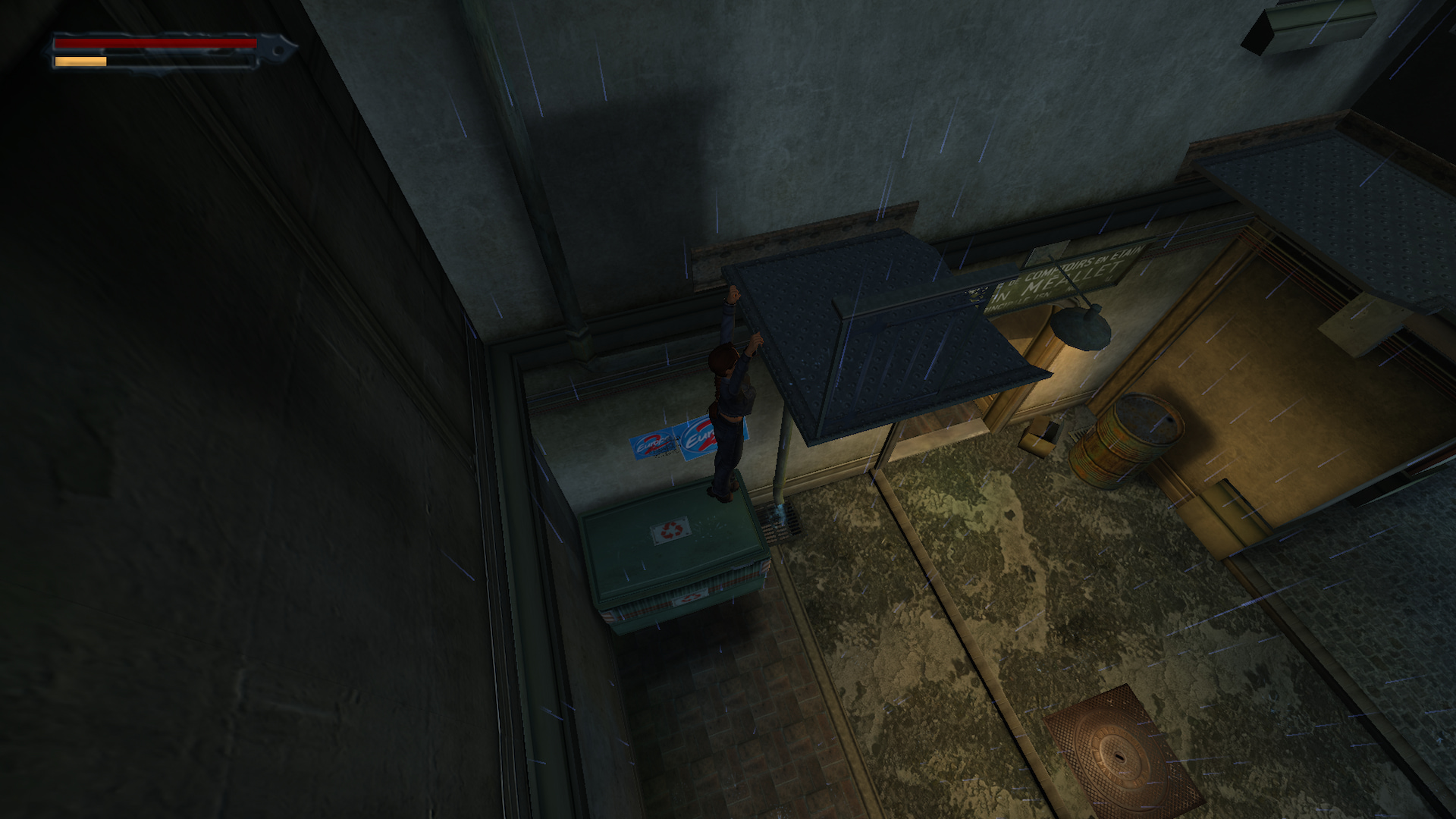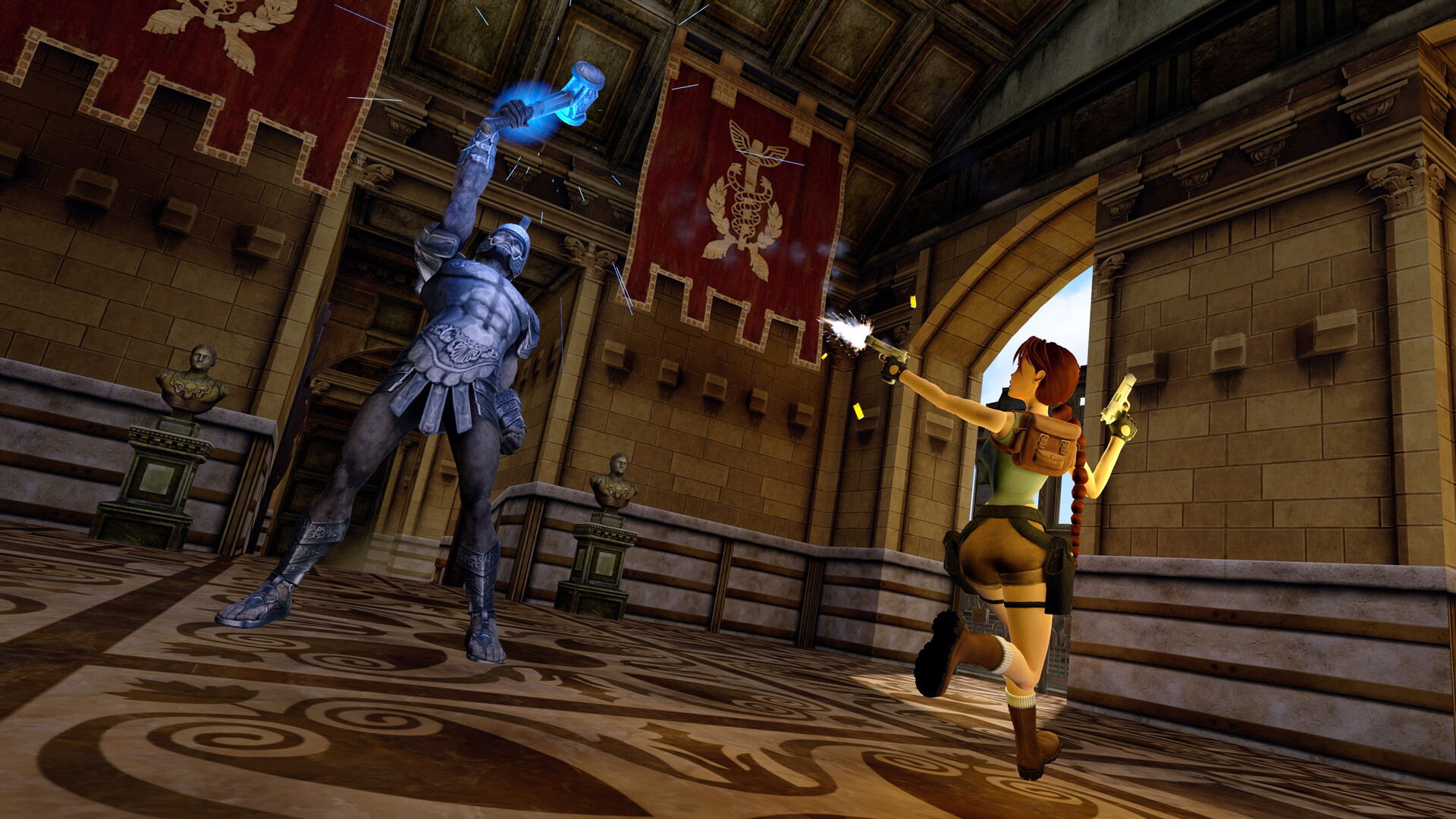Following the success of last year’s Tomb Raider 1-3 Remastered, the natural next step for the developer would have been to bring over Core Design’s remaining classics. While it would make sense from a historical perspective and allow current-gen players to properly enjoy the entire original series with revamped visuals, it still seemed odd.
After all, Tomb Raider 4: The Last Revelation is where the development team finally had enough of Lara Croft and decided to kill her off, making it the last title in the series. That didn’t last long, though, as Eidos Interactive mandated more Tomb Raider titles, resulting in two new games. The first was Tomb Raider: Chronicles, an anthology of standalone tales meant to honor Croft’s legacy by milking it for more money.
Tomb Raider: The Angel of Darkness is the other – a sequel/soft reboot that saw the return of Lara in a way that so many fans demanded: A stealth action-adventure title with another playable character. Alongside Chronicles, it’s considered the absolute lowest point of the series. While critics and fans mercilessly panned it, at least it catalyzed Crystal Dynamics to take over and reboot everything with Tomb Raider: Legend.
A remaster of either title, let alone both together, just doesn’t seem ideal, and yet, the developer is going through with Tomb Raider 4-6 Remastered. Launching on February 14th for Xbox One, Xbox Series X/S, PS4, PS5, PC, and Nintendo Switch, the compilation includes several new features like a fly-by camera, an option to skip cutscenes, and an ammo counter. There’s even some restored content in The Angel of Darkness, which provides “more context” for the story.
Above all else, the biggest appeal of these remasters is the visuals, and the developer, thankfully, continues killing it in that regard. Let’s dive into each title and compare their visuals to the original games to outline all the improvements.
Tomb Raider: The Last Revelation – Original vs. Remastered
Even with the development team at Core Design feeling absolutely burned out on the franchise, Tomb Raider 4 upped the visual quality in numerous ways. Character models felt more natural thanks to additional facial features; levels sported improved lighting and 3D architecture – the PC version even had bump mapping.
Its presentation felt more fluid and seamless, especially with how players communicated with each other in cutscenes. Of course, as endearing as the character animations and environmental design, the lighting was also commendable, especially with light shafts through windows at specific points.
The remaster improves on all that in some truly incredible ways. First off, the character models are much more detailed, right down to better faces and more natural reactions. The prologue is also the perfect showcase for the revamped lighting and shadows, with more pronounced beams that more naturally illuminate Lara’s surroundings.
Of course, the environmental textures are completely overhauled and brimming with new details, including new foliage, sharper tree textures, and more. That skeleton on the ground in the beginning? It’s now much more detailed, with the colors more fitting the environmental tones. Even the leaves dangling from above are individually outlined and rendered to look natural and less like clumps of green.
Perhaps the only downside is that some sections can look a little washed out compared to the original’s vibrancy. It’s fine when wandering through darker sections, especially with the muzzle flash from Croft’s weapons naturally lighting up the surroundings. But some places definitely feel more subdued in color tones than the original.
Tomb Raider: Chronicles – Original vs. Remastered

Since it was built for the PlayStation One and meant to call back to the previous titles’ gameplay, Chronicles didn’t sport much of a graphical leap for the series. It still sported some interesting lighting and texture work, though the former didn’t exactly feel like the most realistic. The environmental textures also felt a bit uneven and less seamless in places, which isn’t the case in the remaster. Once again, they’re completely overhauled, from the gorgeous pavement with more discernible cobblestones to proper door arches and window sills.
The hanging foliage is also presented yet again with individual leaves, looking less messy than the original. Such is the clarity of the environmental textures that the signs are more imminently readable and less fuzzy. It’s also worth noting the lighting improvements, which can transform a room where Lara might tight-rope walk into a sequence where environmental features are more easily discernible. Overall, everything inherent in Tomb Raider: The Last Revelation’s remaster is just as pronounced here, even if the locations aren’t necessarily as detailed.
Tomb Raider: The Angel of Darkness – Original vs. Remastered

As awful as the game was, you have to give credit where it’s due to Core Design for the original visuals, even if the art direction and overall fidelity were far from top-notch at the time. This being the first Tomb Raider developed from the ground up for PlayStation 2, it sports noticeable upgrades to the lighting and shadows, including starker tones to match the overall edgier atmosphere. The environmental textures and assets sport higher polygon counts and details, while atmospherics like smoke and fog further add to the mood. Lara’s model is also a step up in almost every way.
Its remaster is perhaps the most surprising upgrade yet in terms of sheer quality. The rain in the opening level is much more pronounced, right down to its hitting the floor, and the multitudes of different lighting feel much more natural, especially in the shadows created. The textures are more detailed by leaps and bounds, better fulfilling the dingy and dark tones that Core Design doubtless sought.
Conclusion

Though it maintains much of the animation work and cutscene direction of the originals, Tomb Raider 4-6 Remastered does more than just radically transform the environments, lighting, and shadows for modern platforms. It also ensures a uniform design for Lara Croft’s model throughout, ensuring she looks the same in The Angel of Darkness as she does in The Last Revelation and Chronicles while still presenting immaculate details.
Environmental objects which you acquire even sport more detailed 3D models, fitting in with the rest of the revamps. And, of course, it all runs at a silky smooth 60 frames per second throughout, with nary a frame drop in sight on PS5.
So, you could debate the necessity of bringing Tomb Raider 5 and 6 back in remastered form, even if the developer said it just didn’t feel right to only remaster the fourth game in. However, there’s no denying that Tomb Raider 4-6 Remastered is the best way to experience these games. Maybe it’s in the sheer amount of features and quality of life changes, or finally learning what the heck is going on in The Angel of Darkness. Either way, they’re an essential part of history and complete Croft’s original journey stunningly.














